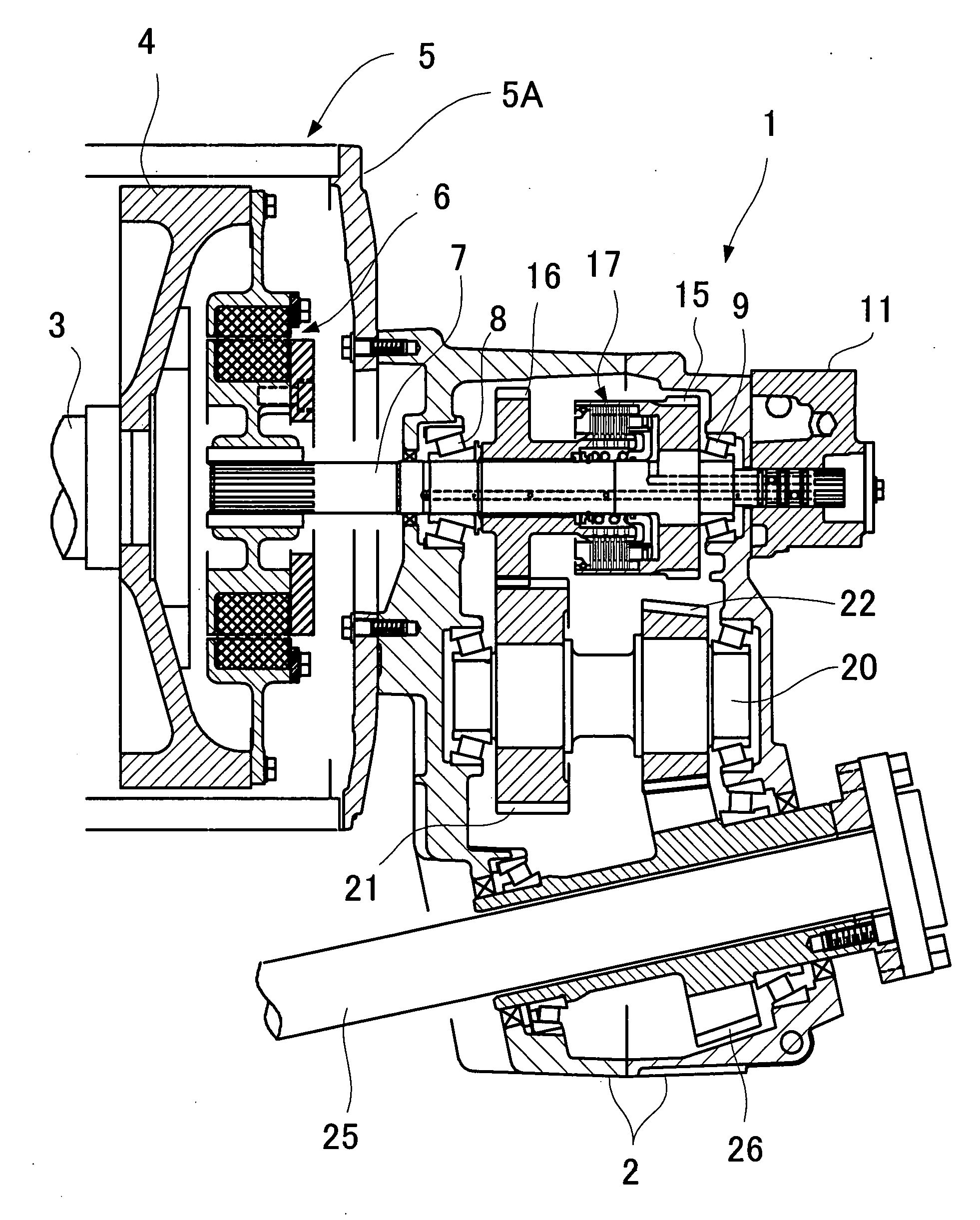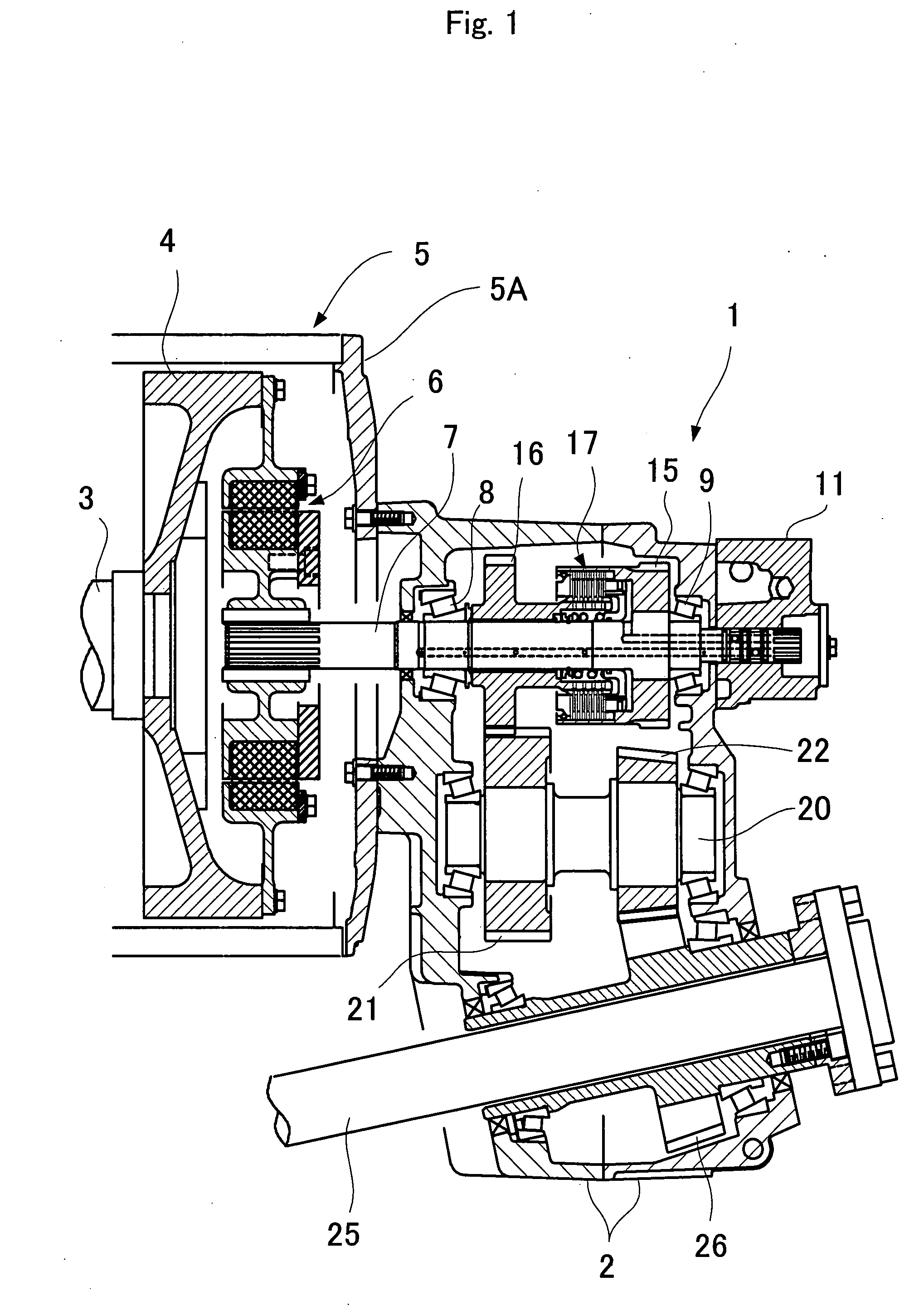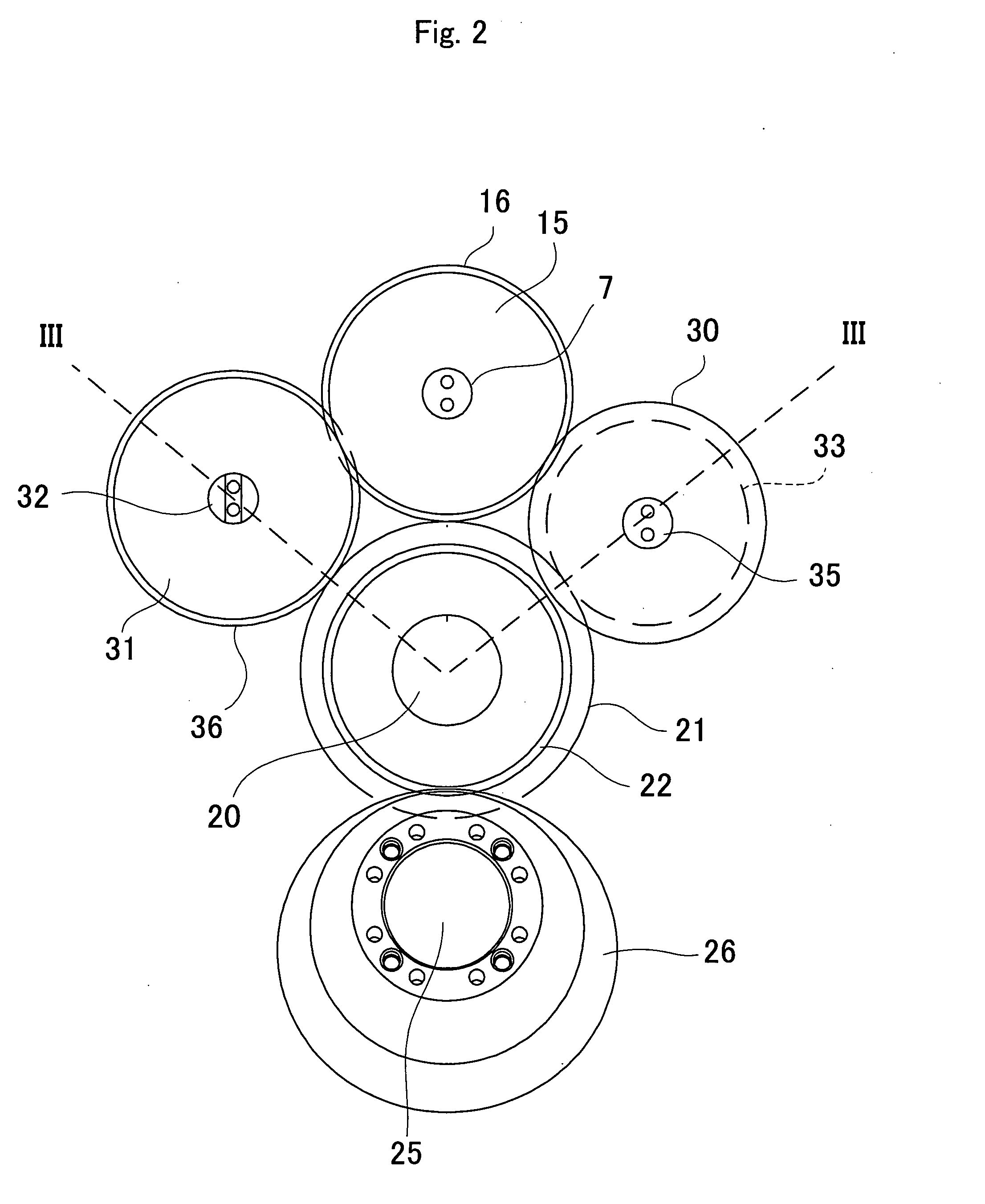Marine reduction and reverse gear unit
a technology of reverse gear unit and engine, which is applied in the direction of marine propulsion, vessel parts, vessel construction, etc., can solve the problems of insufficient torque produced by the engine rotating at about 2200 rpm, and achieve the effect of stable boat speed and enhanced acceleration performan
- Summary
- Abstract
- Description
- Claims
- Application Information
AI Technical Summary
Benefits of technology
Problems solved by technology
Method used
Image
Examples
first embodiment
[0034]First, a marine reduction and reverse gear unit according to the present invention is described with reference to FIGS. 1 to 4. FIG. 1 is a longitudinal sectional view illustrating the marine reduction and reverse gear unit. FIG. 2 is a front view illustrating the engagement of gears of the marine reduction and reverse gear unit. FIG. 3 is a sectional view taken along the line III-III of FIG. 2. FIG. 4 is a diagram of a hydraulic circuit provided in the marine reduction and reverse gear unit.
[0035]The marine reduction and reverse gear unit 1 is provided with a casing 2. The casing 2 is fixed on a housing 5 in which components such as a flywheel 4 connected to a rotary shaft 3 of an engine E (FIG. 4) are accommodated. The flywheel 4 is connected to one end of an input shaft 7 via an elastic coupling 6. The input shaft 7 is rotatably supported by bearings 8, 9 in the casing 2. A cover 5A of the housing 5 may be integrally formed with the casing 2.
[0036]A drive gear 15 is fixed o...
second embodiment
[0056]Since the hydraulic circuit operates in the above-described manner, the following effects can be achieved. When wakeboarding, where the boat runs at a comparatively low speed with added ballast water to increase the tare weight, the number of engine revolutions is increased to automatically engage the first forward speed hydraulic clutch 37 and make a high torque range available, thereby providing a stable boat speed and enhanced acceleration performance. When not wakeboarding, where the boat runs at a normal speed, the number of engine revolutions is reduced to automatically disengage the first forward speed hydraulic clutch 37 and engage the second forward speed hydraulic clutch 34, thereby achieving stable running. Thus the operator is free from the need to perform complicated clutch shift operations, and does not have to be conscious thereof when running the boat.
[0057]Next, a third embodiment of a hydraulic circuit is described with reference to FIG. 6. The third embodim...
third embodiment
[0061]According to the hydraulic circuit having the above configuration, when the shift control valve 46b is in the center position at the time of shifting from forward first speed to second forward speed, hydraulic oil is temporarily supplied to both the first forward speed hydraulic clutch 37 and the second forward speed hydraulic clutch 34. As a result, there is no temporal decrease in the number of rotations of the output shaft as indicated by the broken line in the graph of FIG. 7 when shifting from first forward speed to second forward speed, and smooth shifting as indicated by the solid line in the graph of FIG. 7 is achieved partly due to the slip engagement effect of the friction clutch.
[0062]In the embodiment illustrated, the pilot oil passage 57 is provided with a variable throttle valve 58, and the return spring 55 is provided with a spring force adjustment mechanism 55a. However, since these components are to adjust the timing of shifting between first forward speed and...
PUM
 Login to View More
Login to View More Abstract
Description
Claims
Application Information
 Login to View More
Login to View More - R&D
- Intellectual Property
- Life Sciences
- Materials
- Tech Scout
- Unparalleled Data Quality
- Higher Quality Content
- 60% Fewer Hallucinations
Browse by: Latest US Patents, China's latest patents, Technical Efficacy Thesaurus, Application Domain, Technology Topic, Popular Technical Reports.
© 2025 PatSnap. All rights reserved.Legal|Privacy policy|Modern Slavery Act Transparency Statement|Sitemap|About US| Contact US: help@patsnap.com



